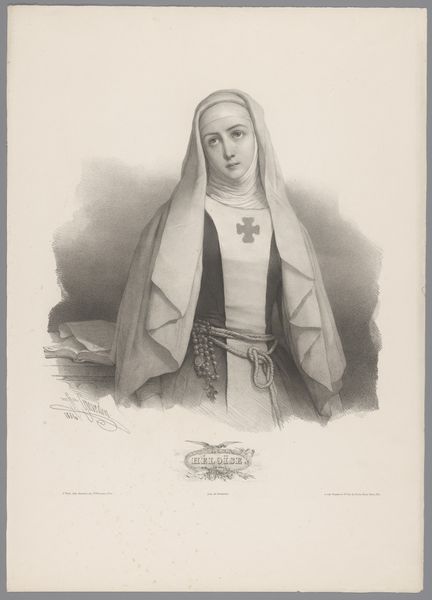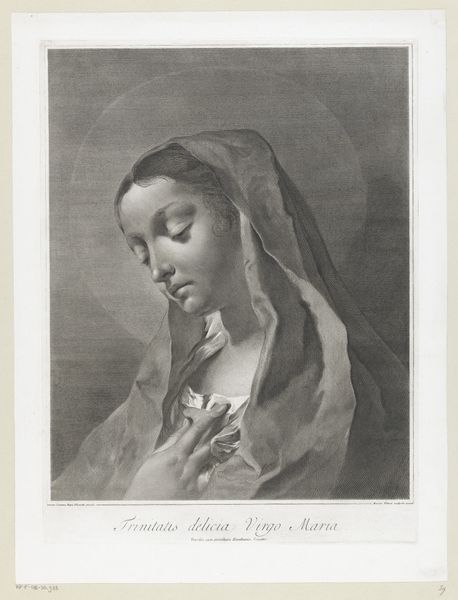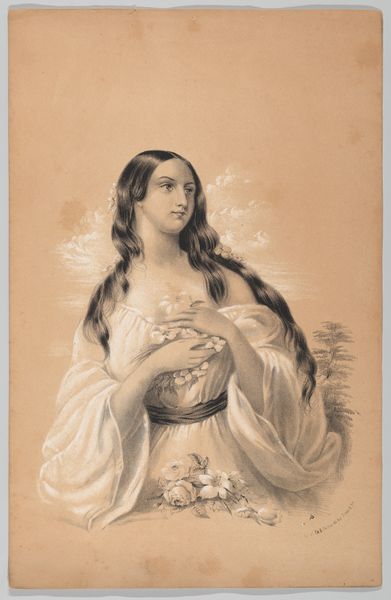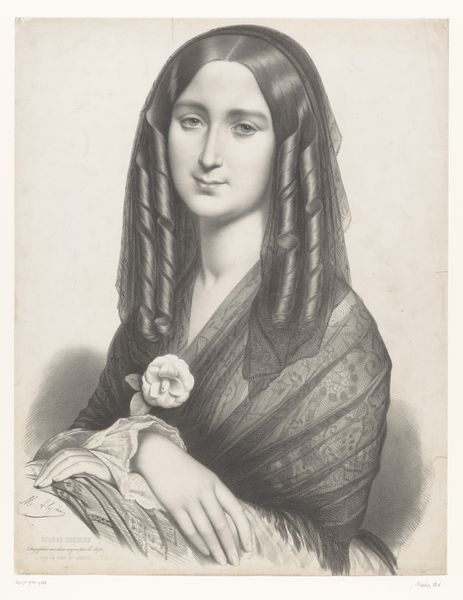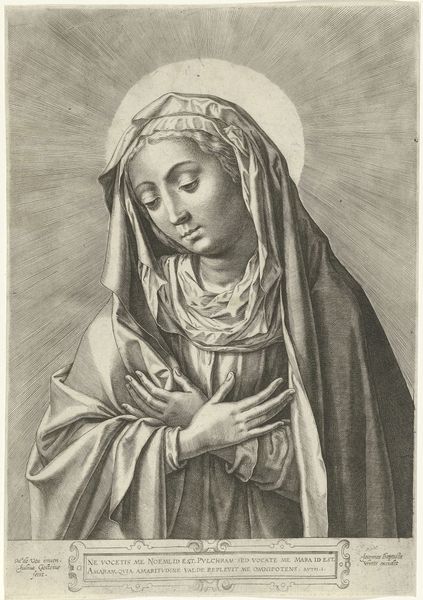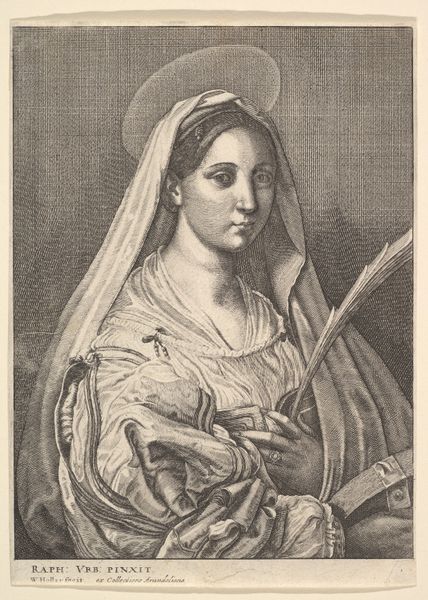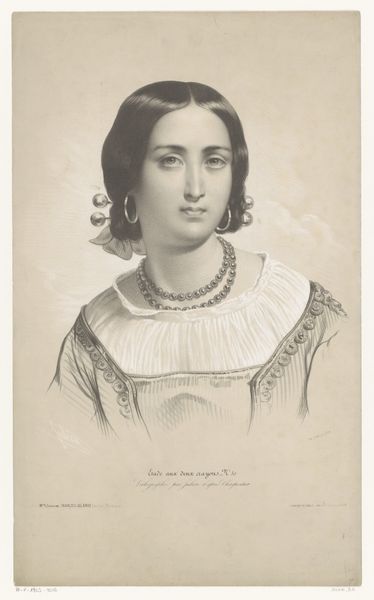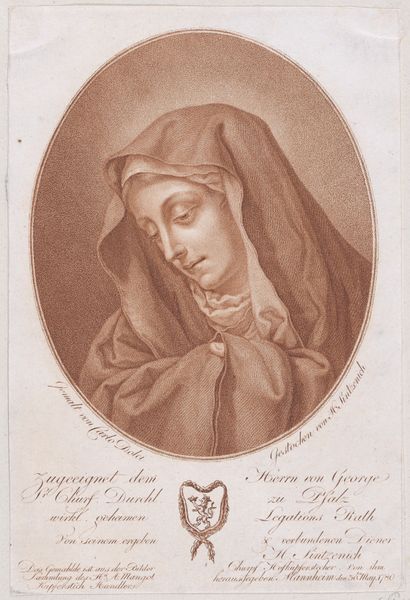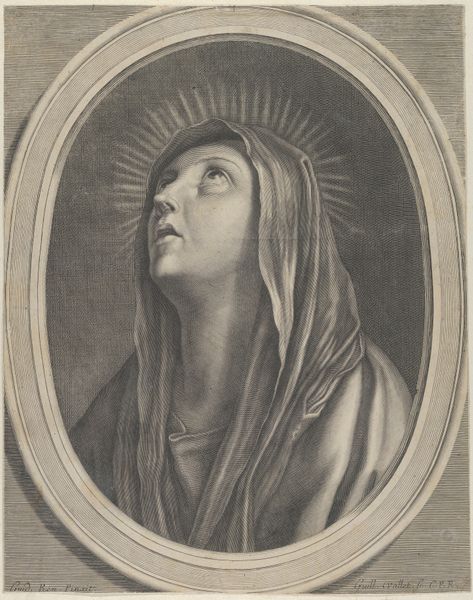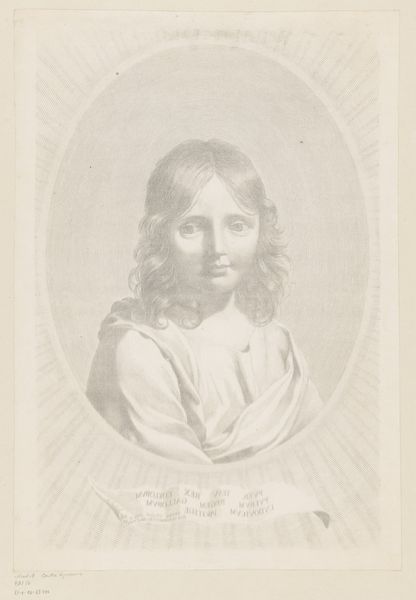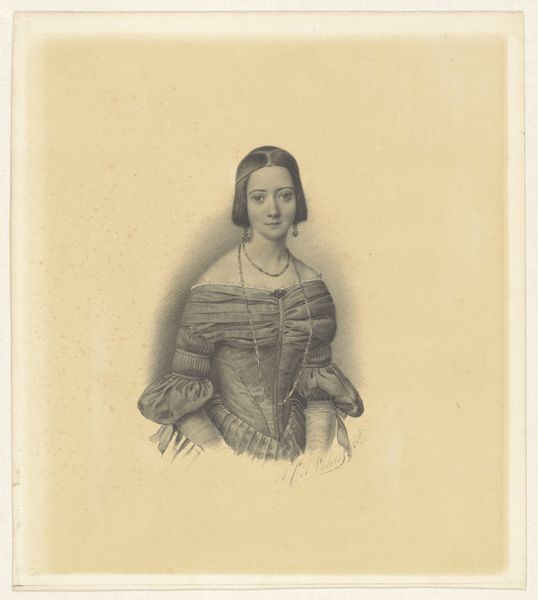
lithograph
#
portrait
#
16_19th-century
#
lithograph
#
portrait reference
#
portrait drawing
#
facial portrait
#
portrait art
#
fine art portrait
#
realism
Dimensions: height 482 mm, width 317 mm
Copyright: Rijks Museum: Open Domain
Curator: Here we have "Portret van Meisje," a lithograph created by Bernard Romain Julien sometime between 1848 and 1853. It’s part of the Rijksmuseum's collection. Editor: The grayscale immediately suggests seriousness, almost severity. The soft, almost blurred edges give it an ethereal feel. The girl's gaze is intense, though somewhat soft, which invites the viewer into a contemplative state. Curator: Julien’s lithograph captures a young girl swathed in drapery, likely referencing the common artistic practice of depicting women in classical or allegorical guise. Her almost severe headdress draws a parallel between her identity and those of other religious female icons of the period. Editor: Absolutely. The meticulous detail achieved with the lithographic technique creates a wonderful tonal range. Notice the almost imperceptible gradations of shading which help the texture of the shawl, the softness of her face, and the glint of light in her eyes. It adds an amazing amount of depth, particularly for a two-dimensional work. Curator: That’s astute. Looking at it through a feminist lens, her presentation raises interesting questions about prescribed roles and imposed identities of young women. The image reflects the visual language of the era, particularly regarding class and gender constructs. The wrapping could symbolize a desire to be hidden and express both freedom and captivity. Editor: Yes, I think there’s also something to be said for how the lines guide the eye to converge on her face and, more specifically, her stare. This makes a strong aesthetic statement. Curator: Indeed. Thinking about the politics of the 19th century and considering the lack of visibility and agency afforded to women in the political arena, pieces like this one gain power when you analyze the nuances of presentation. Editor: I am especially struck by how this realistic yet subtly romantic portrait offers an immersive visual experience through its play of light and shadow and refined compositional choices. Curator: By understanding the artwork’s historical and societal background and also engaging with how those features function, we start to appreciate its deep narrative. Editor: Agreed, this image merges the political context with sophisticated execution, offering new avenues of reflection.
Comments
No comments
Be the first to comment and join the conversation on the ultimate creative platform.
